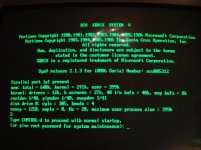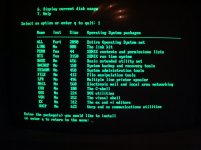jonnymacuser
Experienced Member
What are the general details surrounding how people used to run Xenix on an 8088?
- SCO Xenix 86 2.1.3 seemed like a popular version
- what kind of media was it distributed on? 5.25" floppys or 3.5"? what size(s)? 360kb?
- where would you get it? mailorder? computer shop? in 1983?
- how much $?
- was it in BYTE?
- how many users roughly?
- what were the documentation/manuals like (compared with IBM DOS)?
- how much memory was required? 640kb? disk space?
- could you boot into a useable system with a floppy?
- did it run DOS .exe's?
- did it support ethernet cards?
- serial console(s)?
- multiuser support?
- networking? file sharing? or anything else worth mentioning?
- SCO Xenix 86 2.1.3 seemed like a popular version
- what kind of media was it distributed on? 5.25" floppys or 3.5"? what size(s)? 360kb?
- where would you get it? mailorder? computer shop? in 1983?
- how much $?
- was it in BYTE?
- how many users roughly?
- what were the documentation/manuals like (compared with IBM DOS)?
- how much memory was required? 640kb? disk space?
- could you boot into a useable system with a floppy?
- did it run DOS .exe's?
- did it support ethernet cards?
- serial console(s)?
- multiuser support?
- networking? file sharing? or anything else worth mentioning?



